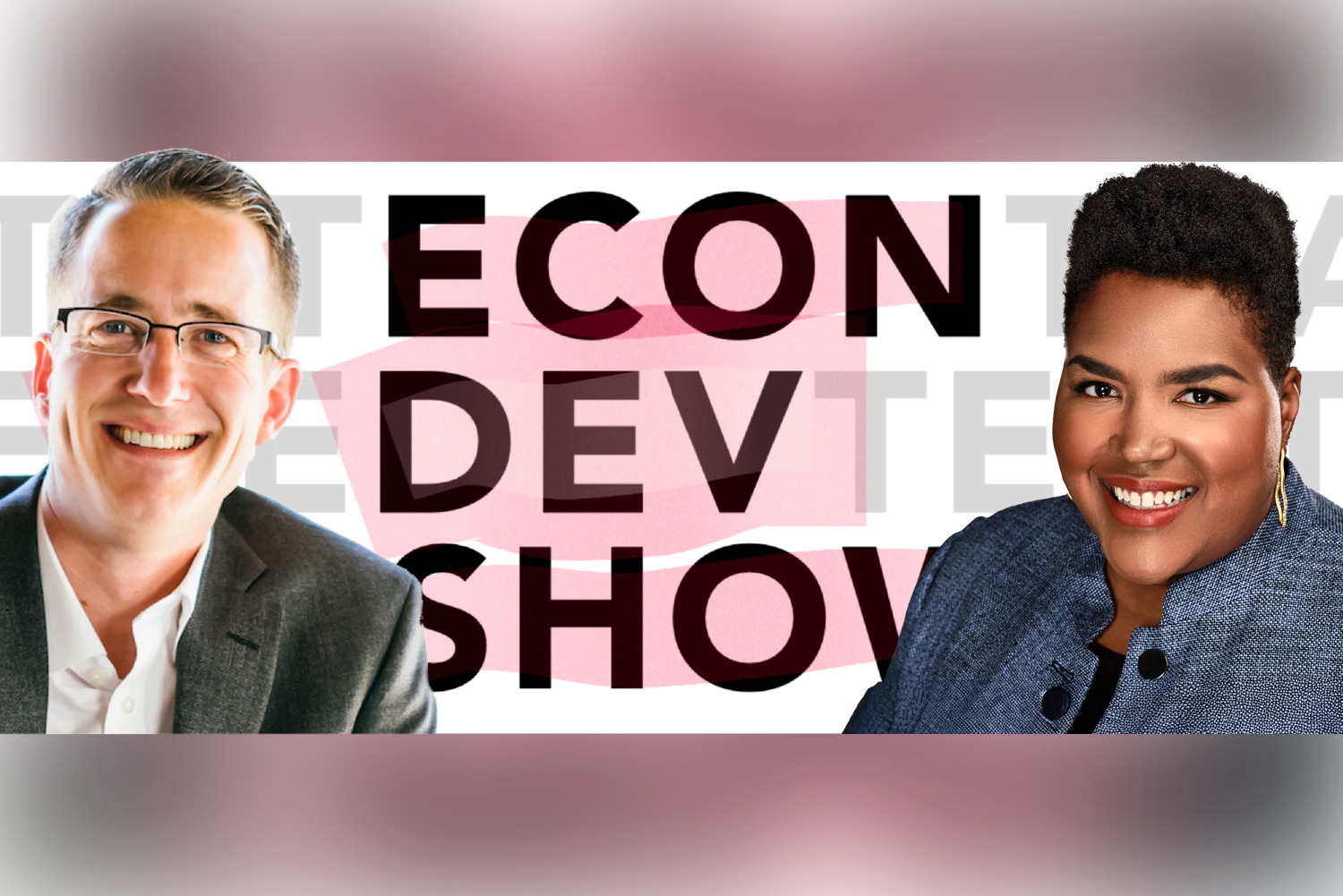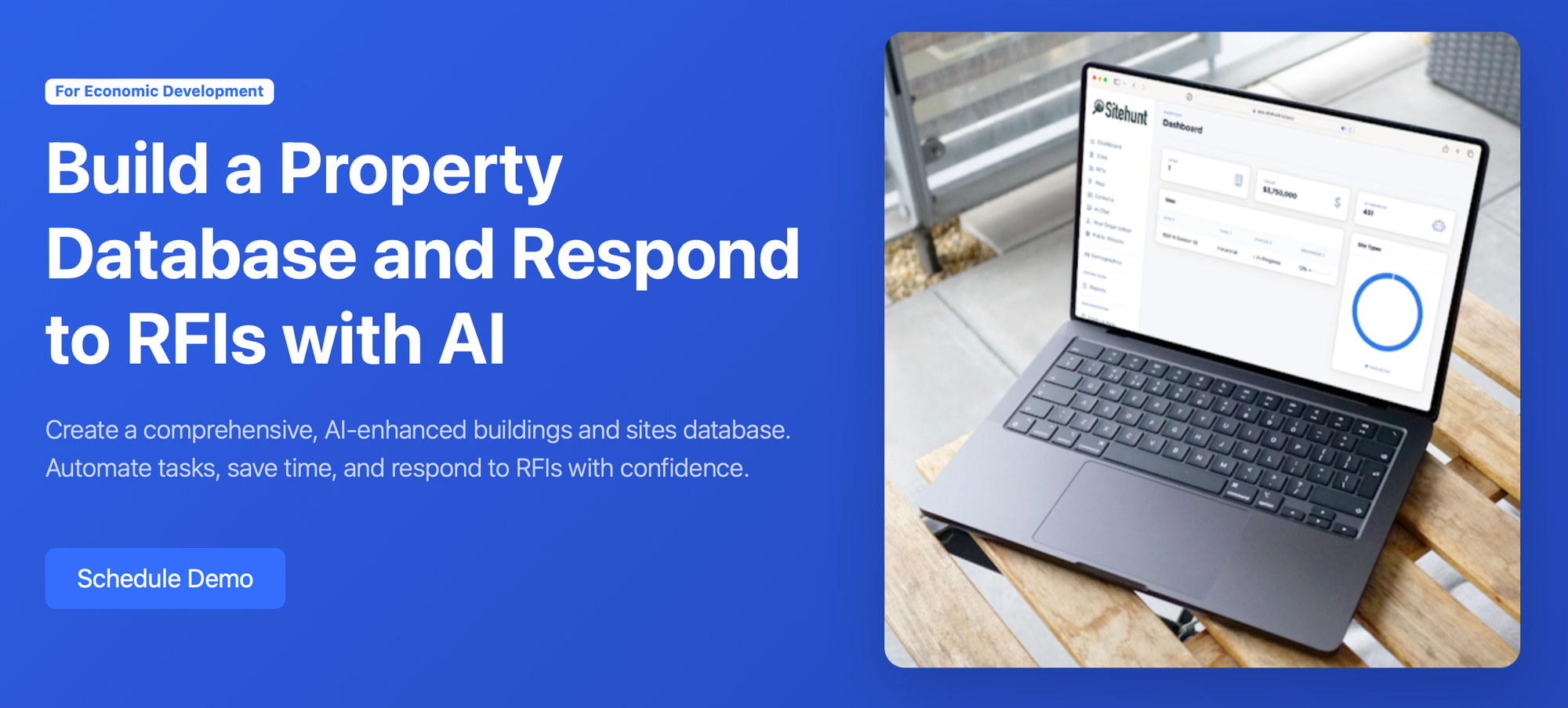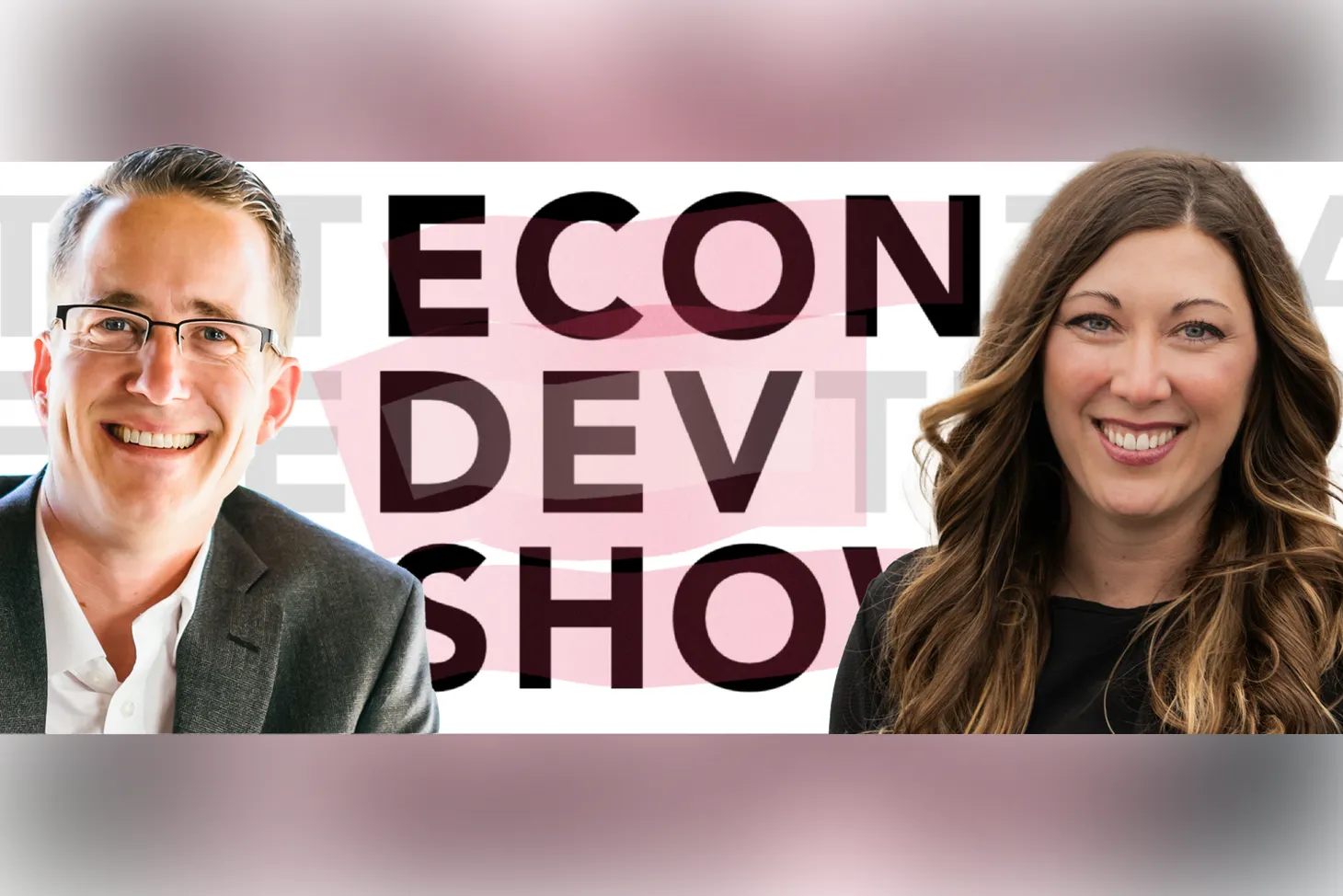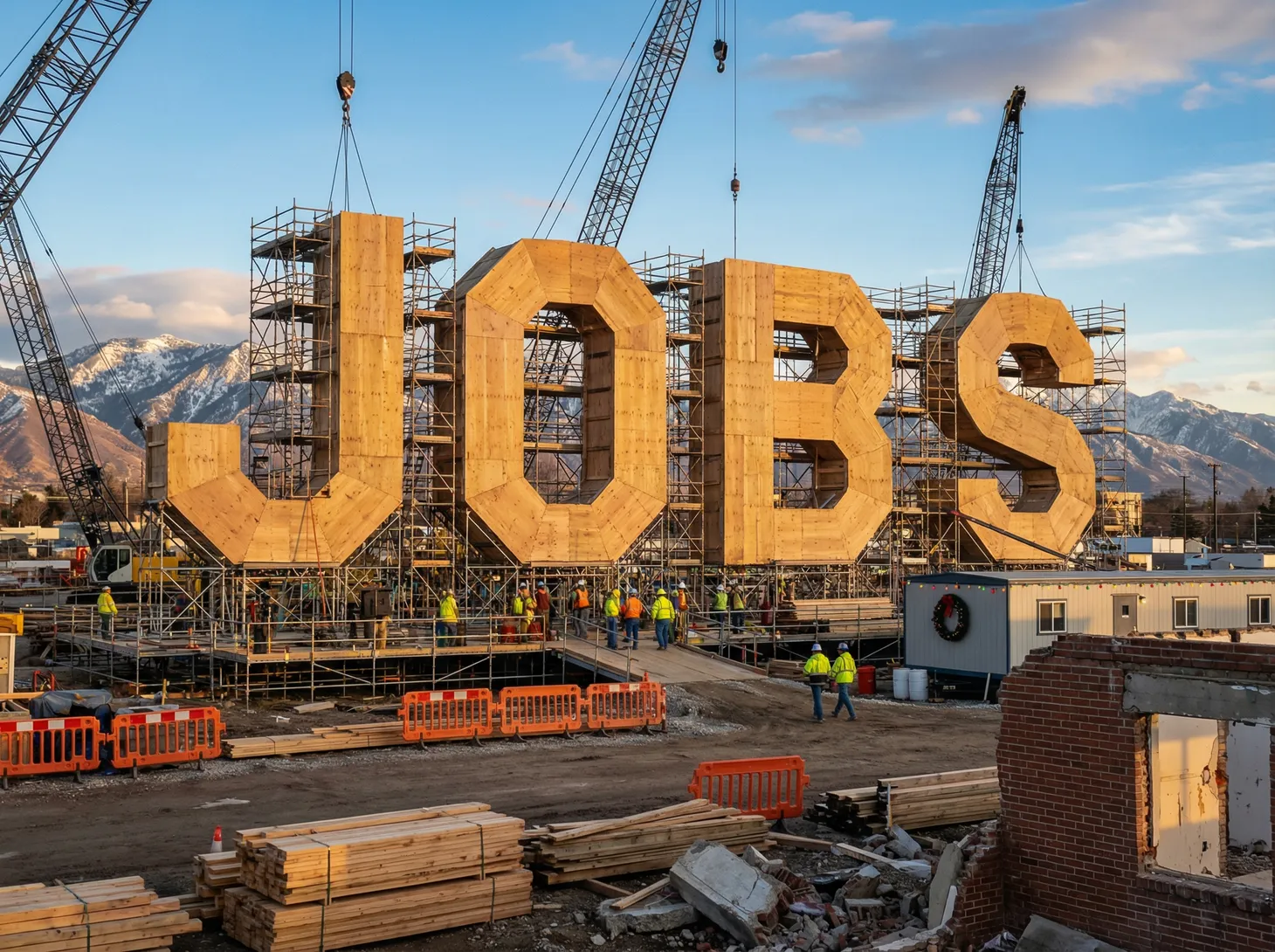Podcast 169: Reimagining Urban Industrial Spaces for Modern Manufacturing with Lindsay Greene
Not your grandfather's factory job: Manufacturing in the 21st century

Table of Contents
Episode 169 of the Econ Dev Show Podcast is out.
In this episode of the Econ Dev Show, host Dane Carlson speaks with Lindsay Greene, CEO of the Brooklyn Navy Yard, about transforming urban industrial spaces for modern manufacturing.
Greene shares insights on the challenges of changing perceptions about manufacturing careers, the importance of integrating workforce development with economic strategy, and her unusual career path from investment banking to grocery e-commerce before leading a major industrial development.
The conversation explores how the Navy Yard creates accessible economic opportunities, the difficulties of attracting grocery stores to underserved areas, and Greene's passion for industrial policy as a driver of economic growth.
Like this show? Please leave us a review here — even one sentence helps!
From Dane: Not only do I publish the Econ Dev Show newsletter and podcast for free every week, but over the past year, I've also been developing a groundbreaking tool for economic development organizations: Sitehunt.
I've been told it's the first truly practical application of AI in economic development.
Your peers agree. In its first year alone, Sitehunt is already being used by EDOs of all sizes across the country.
Here's what it can do:
- Automatically research and enhance your existing buildings and site database--or even create one from scratch.
- Continuously discover new, suitable buildings and sites within your communities to grow your economic development inventory.
- Generate compelling marketing content for your sites.
- Instantly analyze RFIs and match them to your inventory, ensuring you never miss an opportunity from a site selector.
Can I give you a demo? I promise you'll be amazed at what Sitehunt can do.
Ten Actionable Takeaways
- Consider integrating workforce development and economic development under one organizational structure to reduce friction and align goals.
- Modernize perceptions of manufacturing by highlighting how today's industrial jobs offer sustainable careers without requiring advanced degrees.
- Create flexible spaces like pop-up opportunities for businesses not ready to commit to permanent locations.
- Recognize the unique challenges of attracting grocery stores and develop targeted strategies for food access in underserved areas.
- Leverage social media (like Instagram) and accessible communication channels to connect with community members and businesses.
- Balance preservation of industrial/waterfront spaces with the need for evolution to meet modern economic needs.
- Build strategic partnerships that enhance both economic opportunity and quality of life for residents.
- Develop demonstration projects that showcase how traditional industries are transforming for the future.
- Consider how your personal and professional background, even if unconventional, brings valuable perspective to economic development work.
- Create open channels of communication between your executive team and the public to foster engagement and collaboration.
Episode Links
- Brooklyn Navy Yard
- Brooklyn Navy Yard Development Corporation | LinkedIn
- Brooklyn Navy Yard (@BklynNavyYard) / X
- Brooklyn Navy Yard (@bklynnavyyard) • Instagram
- Alumni Spotlight: Lindsay Greene '11 - YouTube
- Brooklyn Navy Yard CEO Lindsay Greene on keeping innovation in NYC | Crain's New York Business
Insight from the Show: The Urban Manufacturing Renaissance: How Brooklyn Navy Yard Is Redefining Industrial Spaces
Lindsay Greene is reimagining the future of urban manufacturing in America's densest city--and creating a blueprint for others to follow.
In a city perpetually hungry for real estate, the Brooklyn Navy Yard stands as a 300-acre testament to industrial preservation. Once America's premier naval shipbuilding facility, today it houses over 550 businesses employing more than 13,000 people and generating over $2.5 billion in economic impact annually. Leading this modern industrial park is Lindsay Greene, whose unconventional career path--from investment banking to grocery e-commerce--has equipped her with a unique perspective on economic development. In this interview, Greene discusses how the Navy Yard is changing perceptions about manufacturing, balancing workforce development with economic strategy, and why industrial policy deserves renewed attention in America's cities.
You've taken an unusual career path to leading one of New York's most significant industrial spaces. How did your previous experiences prepare you for this role?
I think my background has given me a different lens for approaching economic development. The Brooklyn Navy Yard exists at this fascinating intersection of real estate, industrial policy, and community impact. We're not just preserving manufacturing space--we're demonstrating that the industrial and manufacturing sectors you think of from the past aren't necessarily the manufacturing of today or the future.
What misconceptions do people have about modern manufacturing?
Both historical and modern manufacturing offer accessible careers to people without advanced degrees. Both provide excellent, life-sustaining financial futures and career tracks. But you have to evolve with them to get there. There's a very deep tension in most economic development circles, especially in New York, around holding onto working waterfront and industrial space.
The Navy Yard is known for its workforce development programs. How are you preparing workers for modern manufacturing jobs?
We've expanded beyond traditional job placement services to offer direct advanced manufacturing training. Our CNC Operator training program is a perfect example. We train people on computer numerically controlled machinery--think of typical metalworking or woodworking tools that are now computer-controlled, whether it's a router, lathe, or laser cutter.
Participants can earn up to six industry-relevant certifications, giving them the skills needed for jobs right here at the Navy Yard and throughout the city's industrial sector. It's about creating pathways to those sustainable careers I mentioned, especially for residents from our surrounding communities.
You mentioned that tension between preserving industrial space and other development. How do you navigate that pressure?
People constantly look at our property and ask, "Why can't I turn that into housing?" We have the freedom to focus on being the best version of an industrial park that we can be. Getting to that point is difficult for many cities because they're facing housing crises, but not every piece of property is best suited for housing. If you take that approach--converting everything to residential--where are you going to put jobs?
You have to accept where you are existentially and be comfortable removing the noise of "what if we do this instead?" Once you focus, that opens up possibilities: What's the future for this space? What industries would thrive in this environment?
Beyond providing jobs, how does the Navy Yard engage with the surrounding community?
We've created spaces like Market @77, our community-focused food hall, where neighbors and visitors can connect while enjoying food from local small business owners. We also commission public art that celebrates both the historical significance of the Yard and contemporary creative expression. But by and large, the biggest thing we do for the neighborhood is make sure they're connected to the economic opportunities here.
Our employment center has been connecting hyperlocal Brooklyn residents to job opportunities for several decades. It's about creating multiple points of entry for the community to benefit from what we're building.
The Navy Yard seems to be redefining what industrial spaces look like in urban environments. How does sustainability factor into that vision?
Sustainability is central to our future. We're doing adaptive reuse of historic buildings--these are structures with incredible bones built by the Navy decades ago. We're investing in energy-efficient infrastructure and integrating green spaces throughout the campus. And being on the waterfront, resiliency is critical. We can't just keep the water out because it's a key piece of our business, so we're charting new territory on what resiliency looks like for a working waterfront.
Nobody really knows exactly how to do this, but it's what the Navy did when they were here, so we'll figure it out too. We're creating a blueprint for modern, resilient industrial hubs right in the heart of major urban areas.
What lessons did the pandemic teach us about domestic manufacturing?
One of my biggest takeaways from the pandemic is that we actually still have manufacturing tools and skill sets in the U.S. We just forgot how to use them and deploy them. During COVID, we had a moment of remembrance, and I'd like to bring attention back to that for our collective benefit.
What those industries look like may differ across cities. When you get to the scale of something like semiconductor chips, you're not going to manufacture those on a waterfront. But we're going to need chips in everything, so it makes sense to produce them in almost every state.
If our readers want to learn more or connect with you, what's the best way?
Check us out on Instagram @BrooklynNavyYard. You can always email us at info@bny.org--that goes directly to our executive team. I'm happy to talk about any of these topics. As I say, I love to nerd out with people. Anyone who wants to go down the rabbit hole of industrial policy and manufacturing with me--let's go!
It sounds like industrial policy deserves its own conversation.
Absolutely. That's a whole other episode. I'm game--let's do it.

Econ Dev Show Newsletter
Join the newsletter to receive the latest updates in your inbox.


